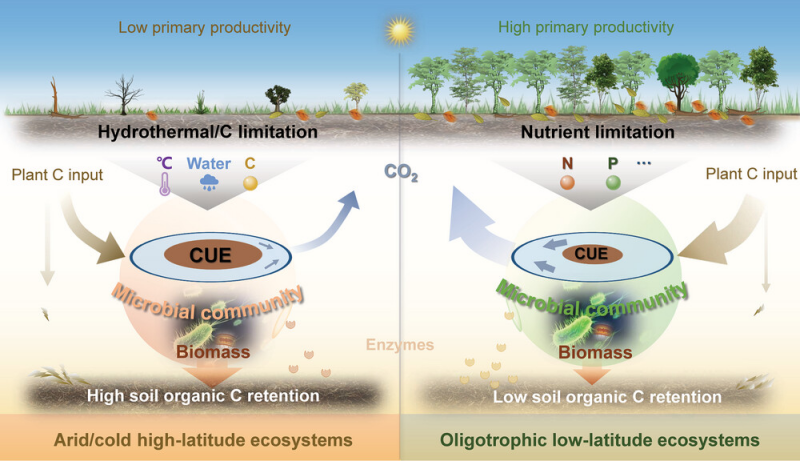Global Patterns of Microbial Carbon Use Efficiency are Modulated by the Limiting Resources
In a study published in Advanced Science, scientists from the Institute of Earth Environment and the Institute of Biology Freie Universität Berlin have shed light on understanding the importance of resource limitations for microbial carbon use efficiency (CUE) and suggested asymmetric responses of organic carbon retention in soils across latitudes to global change factors. Their results provide important insights into understanding and modeling the soil carbon cycle, particularly how it is influenced by global change factors.
Microbial carbon use efficiency (CUE) is an indicator that measure the proportion of organic carbon used by microorganisms for metabolism, which is of great importance for soil carbon storage and climate change mitigation. However, it is unclear for the global patterns of CUE, let alone for the driving factors of the global distribution of CUE. This knowledge gap causes large uncertainties in understanding the responses of CUE to multiple global climate change as well as the implications for soil organic carbon dynamics under changing climate.
Based on the stoichiometric modeling approaches, researchers estimated the surface CUE in natural ecosystems at the global scale. To explore the key driving factors for the global patterns of CUE, they analyzed the relative importance of temperature, precipitation, plant-derived carbon, and soil nutrient availability in affecting CUE.
They find that global patterns of CUE are modulated by the most limiting resources. Larger CUE is often observed in in arid and cold regions, which are characterized by limitations in temperature, water, and plant-derived C inputs. On the contrary, lower CUE is documented in tropical and temperate zones with low soil nitrogen and phosphorus availabilities. These relationships between CUE and environmental factors were further verified using 43 isotope-based CUE observations across the global.
This study highlights the crucial roles of limiting resources on the global patterns of CUE in different climatic regions, which may help advance the understanding of divergent responses of soil organic carbon to global change.

Fig. 1 Conceptual framework showing the contrasting effects of different resource limitations on microbial carbon use efficiency across climate zones. (Image by CUI Yongxing, et al)


